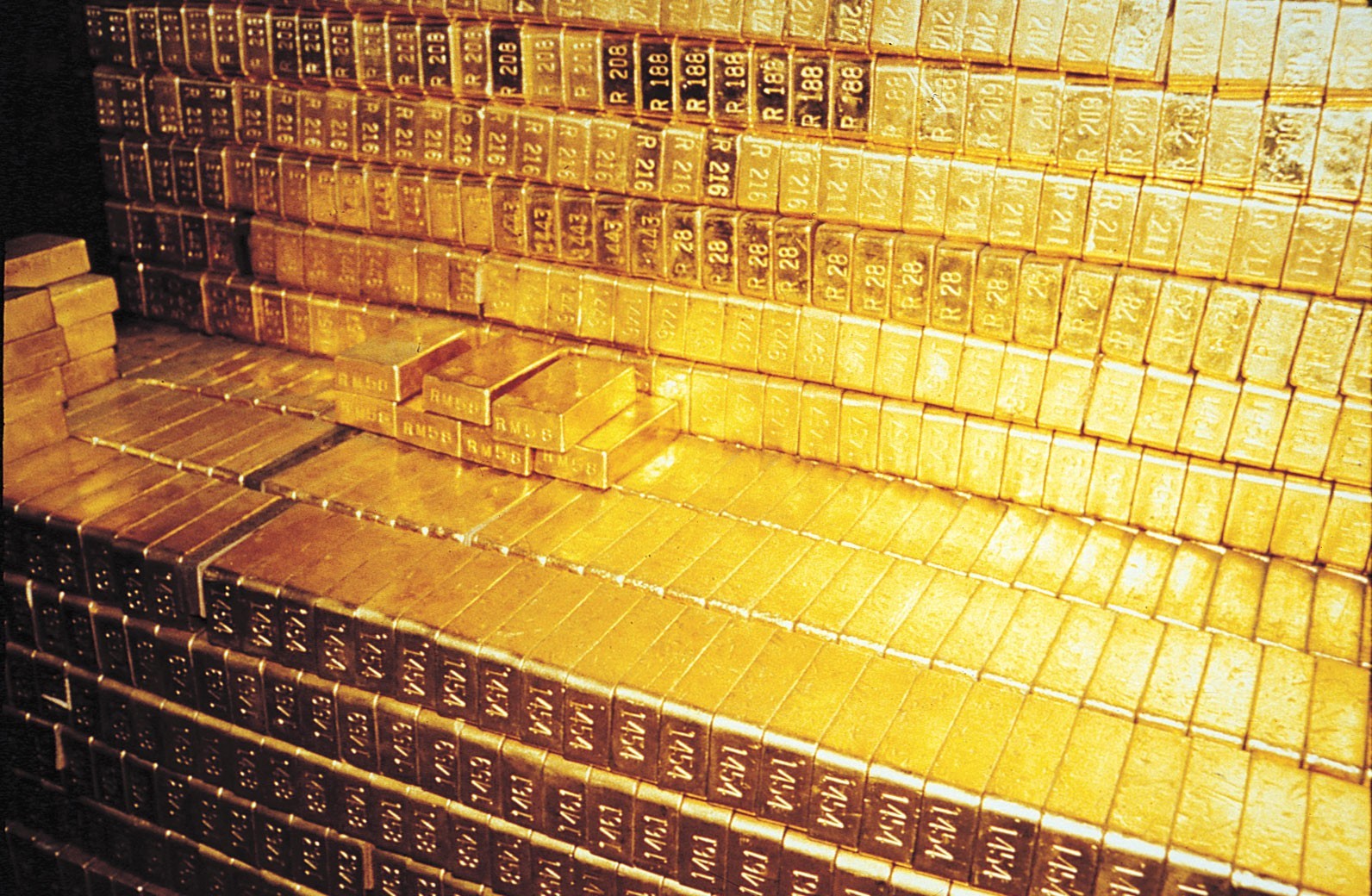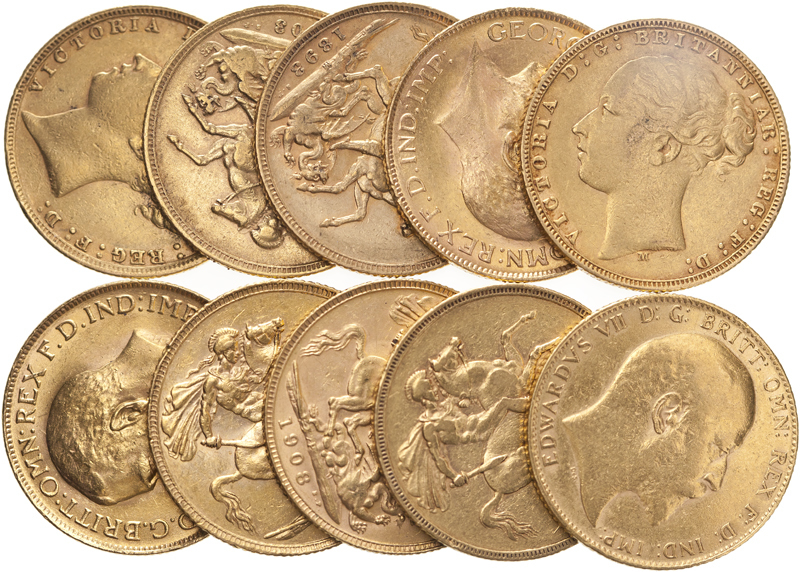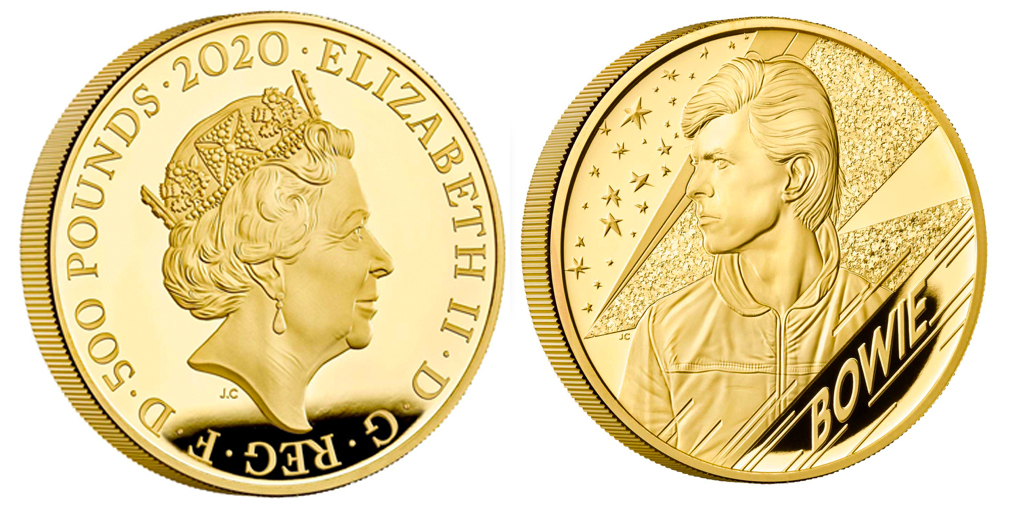Typical investment-grade coins are relatively rare, highly-graded examples. Although they often attract high valuations, premium valuations do not necessarily correspond to investment grade. There are many types of investment-grade coins which can be bought for lower prices, such as exceptional quality in lower denominations.
Before you embark on your collection, it’s useful to narrow your focus. Numismatics is a vast subject, and the many types, dates and mintages of a coin as ubiquitous as the sovereign alone could satisfy a lifetime of collecting (the sovereign has been produced almost continuously for more than two centuries, and minted across five continents).
Choose a field that interests you
Limit yourself to a country, type and and time period. Choose something that you are interested in and want to know more about, such as a monarch, era or country. Understanding your field is key to enjoying the investigative work associated with collecting.
Do your homework
Study past auction results for similar items, and compare grades and general appearances. See how the market responds to these differences and compare retail price lists for different years and look for trends. To learn more, we’ve added a reading list to the end of this article.
Buy quality coins
This might seem obvious, but if you can afford it, go a step above. You want to make sure you buy something that is sought-after and not readily available on the market. Avoid common dates, lower grades and large mintages.
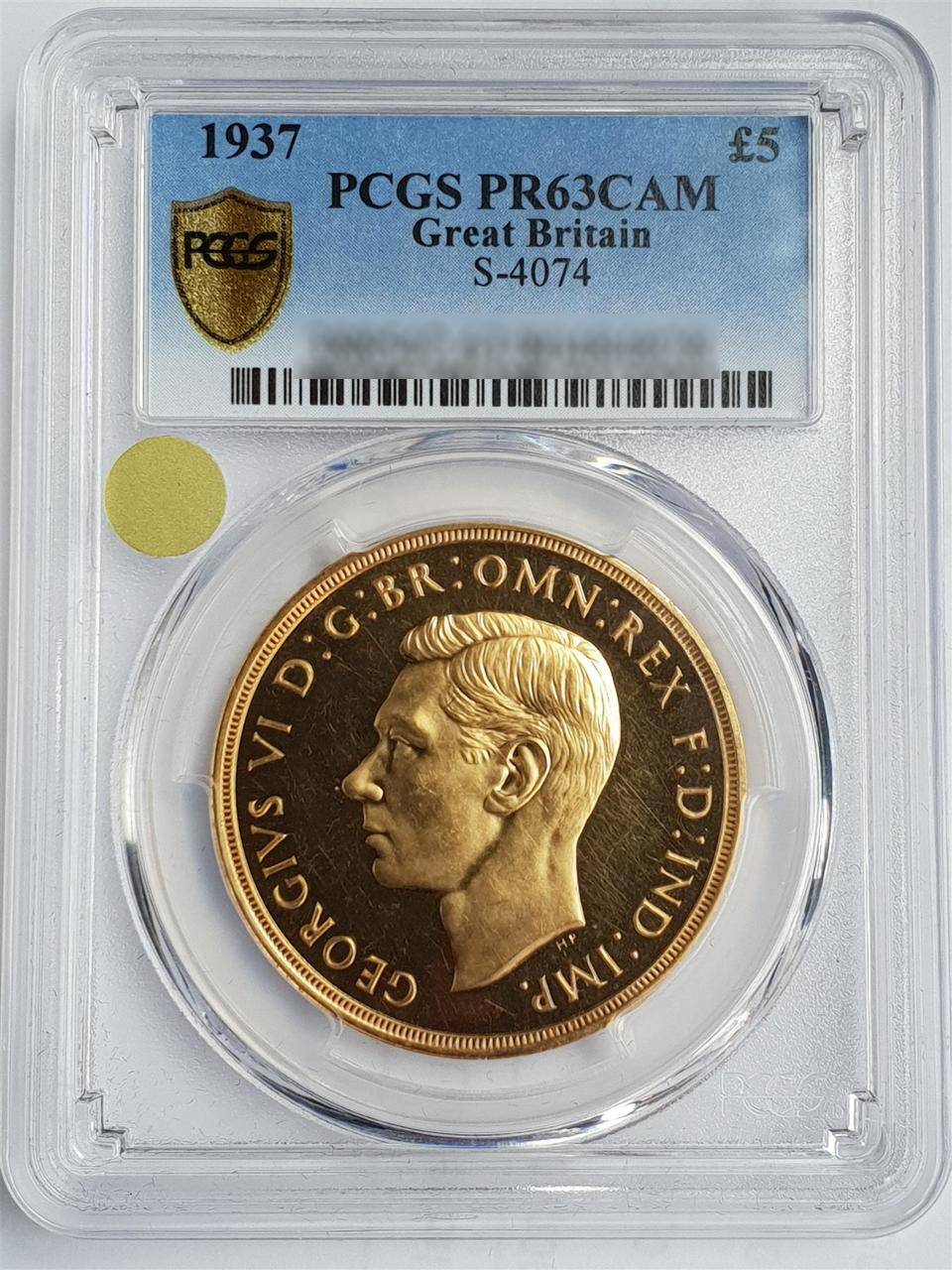
A 1937 George VI £5 gold coin from the first full year of his reign, following the abdication of his brother Edward VIII in December 1936, encapsulated by PCGS
Investing, and investment
Among the most common queries from clients are about coins as an alternative asset, and how to enter a field they might not fully understand. They might own property, stocks, bonds — and perhaps art, wine and classic cars — they might be aware of diversification, but their biggest concern is about how risk is managed.
The Coin Cabinet’s investment portfolios offer a bespoke service to suit each client’s interests, budget, investment horizon and risk profile. We focus on British and Commonwealth gold coins — primarily sovereigns as well as historical, modern and world coins, and we’re also the leading auction house for modern proofs from the Royal Mint. Our portfolios hold only third-party graded coins, which makes valuations very transparent. Clients can check the market price based on the grade, and we price coins for investment portfolios on this basis.
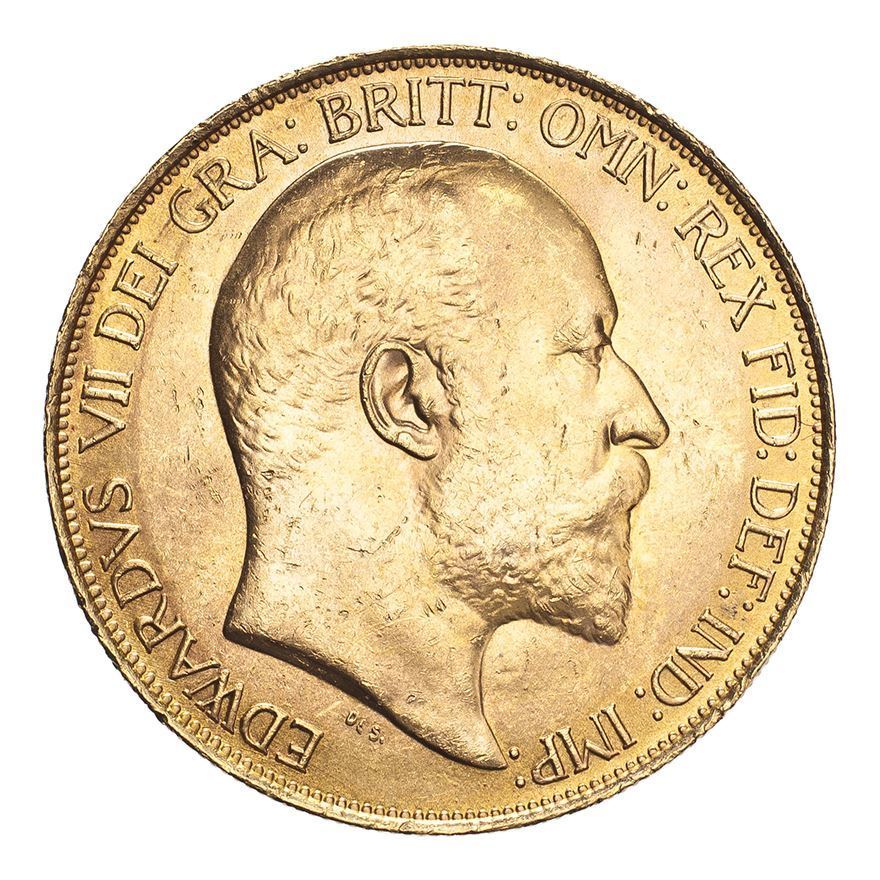
A 1910 Edward VII Great Britain Edward gold sovereign
Typical investment-grade themes
Gold sovereigns
Alongside our specialist sales, The Coin Cabinet’s regular monthly sales focus on gold sovereigns, an iconic coin that in its modern form has been struck since 1817 under George III. The sheer variety of sovereigns make the coin a challenge to collect across its many iterations, including certain key dates, mint marks, die numbers and errors. The Coin Cabinet’s auctions results offer a guide to the market value of the many varieties of sovereigns traded. Sovereigns are regarded as semi-numismatic, meaning that they are a dual investment — in their gold content with a collectible premium. Sovereign valuations are subject to the gold price and the rare/collectable coin market.
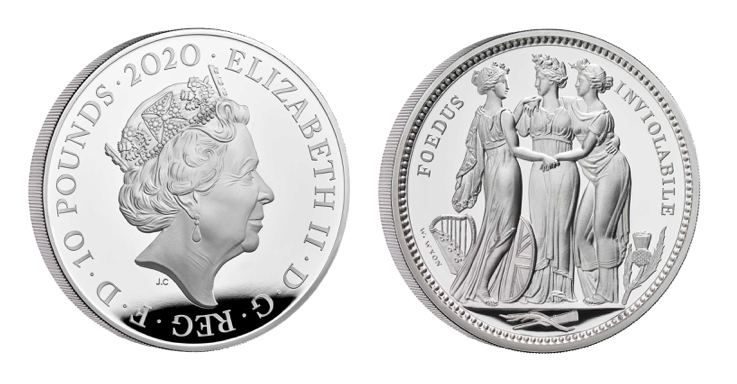
The Three Graces from The Great Engravers Collection by the Royal Mint 2020 £5 silver proof coin designed by William Wyon, RA, portrait bust of Elizabeth II facing right by Jody Clark on obverse (Photo: The Royal Mint, 2020)
Modern proofs
Low-mintage/high-demand Royal Mint proof coins have become a key part of coin trading in recent years. Commemorative coins such as the Great Engravers and Music Legends series have seen appetite from both traditional collectors and investors, as well as newcomers to the market — and the speculation that Royal Mint releases creates among traders. We advise against ‘flipping’ in the short-term, as limited supply of modern proofs sees this initial exuberance pass relatively quickly. With a finite supply of these coins over time, we expect prices to rise in the longer-term.
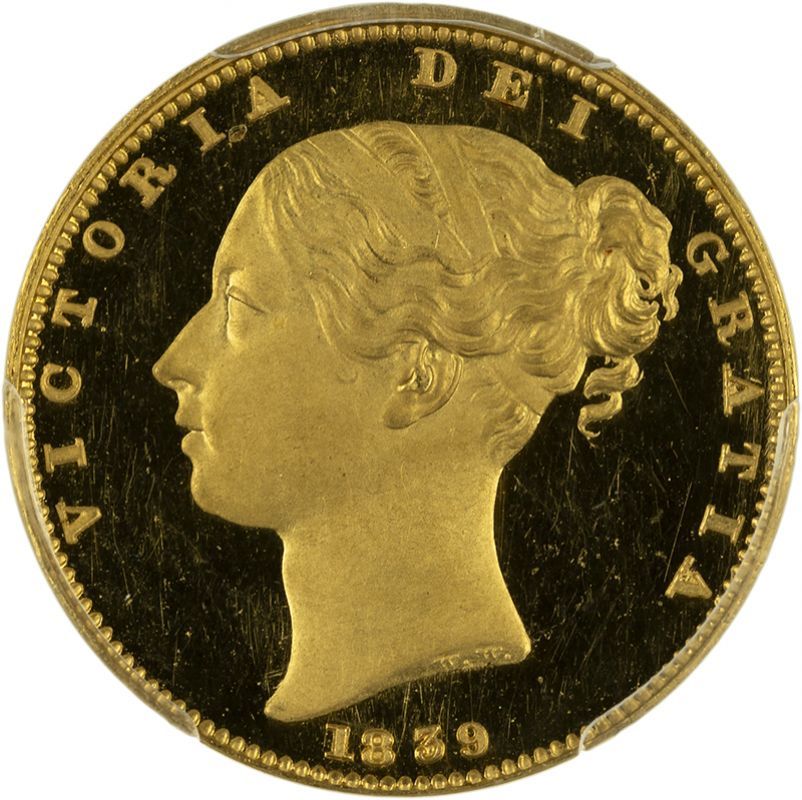
An 1839 gold sovereign, small young head of Victoria facing left on obverse
Rare Coins
What we call ‘steady risers’. Rare coins could be an 1839 proof sovereign, or an 1843 ‘narrow shield’ sovereign — an extremely rare example with very few made with an error on the reverse design. Rarity insulates the value of the asset, and though a rare coin can be slightly more risky than a semi-numismatic coin in terms of price movements, its scarcity gives it long-term upside. The Coin Cabinet believes that coins are a world class investment; a liquid, physical asset with a number of tax advantages that provides an investment hedge at times of economic and political uncertainty.
Final takeaways
Get a good price
Given the tips above, it is easy to ‘fall in love’ with a coin that ticks your boxes. Unless you’re buying for a purpose other than to gain profit, remember that the industry has an annual turnover of more than $100 billion, so rest assured there will be other investment opportunities ahead.
Be open to silver
It may be compelling to believe that gold coins offer the best investment, but when dealing with rare coins, the value stands in no direct correlation to its metal content. Keep your eyes open for good deals on silver.
Avoid unpleasant surprises
Whether you are buying online or in a live auction, you should be fully aware of the minute details of a coin. Make sure high quality pictures are provided and detailed information of the coin’s characteristics.
Reading list
Some of the most important coin reference texts used by The Coin Cabinet team. Look for the latest editions for the most up-to-date prices and information.
- Kevin Clancy, The History of the Sovereign: Chief Coin of the World
- Arthur L. Friedberg, Gold Coins of the World: From Ancient Times to the Present
- Emma Howard (Spink), Coins of England and the United Kingdom
- Chester L. Krause , Clifford Mishler, et al., Standard Catalog of World Gold Coins
- Michael A. Marsh, The Gold Sovereign
- Greg McDonald, The Pocket Guide to Australian Coins and Banknotes.
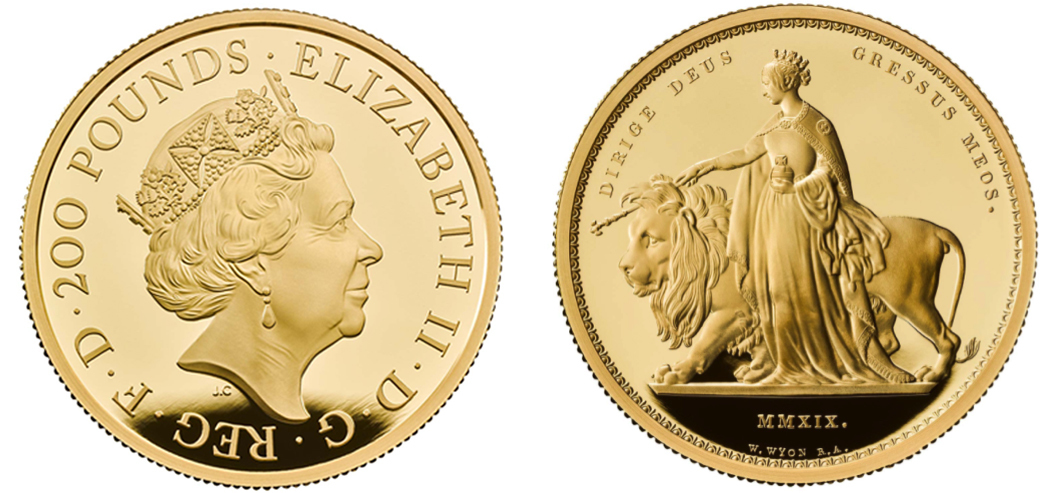
--600px.jpg)
